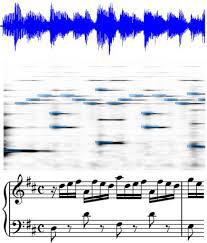Search Results for author: Sergii Stirenko
Found 15 papers, 3 papers with code
Performance Analysis of Open Source Machine Learning Frameworks for Various Parameters in Single-Threaded and Multi-Threaded Modes
1 code implementation • 29 Aug 2017 • Yuriy Kochura, Sergii Stirenko, Oleg Alienin, Michail Novotarskiy, Yuri Gordienko
The basic features of some of the most versatile and popular open source frameworks for machine learning (TensorFlow, Deep Learning4j, and H2O) are considered and compared.
Chest X-Ray Analysis of Tuberculosis by Deep Learning with Segmentation and Augmentation
1 code implementation • 3 Mar 2018 • Sergii Stirenko, Yuriy Kochura, Oleg Alienin, Oleksandr Rokovyi, Peng Gang, Wei Zeng, Yuri Gordienko
Lossless data augmentation of the segmented dataset leads to the lowest validation loss (without overfitting) and nearly the same accuracy (within the limits of standard deviation) in comparison to the original and other pre-processed datasets after lossy data augmentation.
Performance Evaluation of Deep Learning Networks for Semantic Segmentation of Traffic Stereo-Pair Images
no code implementations • 5 Jun 2018 • Vlad Taran, Nikita Gordienko, Yuriy Kochura, Yuri Gordienko, Alexandr Rokovyi, Oleg Alienin, Sergii Stirenko
Here the results of application of several deep learning architectures (PSPNet and ICNet) for semantic image segmentation of traffic stereo-pair images are presented.
Deep Learning for Fatigue Estimation on the Basis of Multimodal Human-Machine Interactions
no code implementations • 30 Dec 2017 • Yuri Gordienko, Sergii Stirenko, Yuriy Kochura, Oleg Alienin, Michail Novotarskiy, Nikita Gordienko
The new method is proposed to monitor the level of current physical load and accumulated fatigue by several objective and subjective characteristics.
Generating and Estimating Nonverbal Alphabets for Situated and Multimodal Communications
no code implementations • 12 Dec 2017 • Serhii Hamotskyi, Sergii Stirenko, Yuri Gordienko, Anis Rojbi
In this paper, we discuss the formalized approach for generating and estimating symbols (and alphabets), which can be communicated by the wide range of non-verbal means based on specific user requirements (medium, priorities, type of information that needs to be conveyed).
Music Transcription by Deep Learning with Data and "Artificial Semantic" Augmentation
no code implementations • 8 Dec 2017 • Vladyslav Sarnatskyi, Vadym Ovcharenko, Mariia Tkachenko, Sergii Stirenko, Yuri Gordienko, Anis Rojbi
In this progress paper the previous results of the single note recognition by deep learning are presented.
Comparative Performance Analysis of Neural Networks Architectures on H2O Platform for Various Activation Functions
no code implementations • 16 Jul 2017 • Yuriy Kochura, Sergii Stirenko, Yuri Gordienko
Deep learning (deep structured learning, hierarchi- cal learning or deep machine learning) is a branch of machine learning based on a set of algorithms that attempt to model high- level abstractions in data by using multiple processing layers with complex structures or otherwise composed of multiple non-linear transformations.
Automatized Generation of Alphabets of Symbols
no code implementations • 16 Jul 2017 • Serhii Hamotskyi, Anis Rojbi, Sergii Stirenko, Yuri Gordienko
In this paper, we discuss the generation of symbols (and alphabets) based on specific user requirements (medium, priorities, type of information that needs to be conveyed).
Comparative Analysis of Open Source Frameworks for Machine Learning with Use Case in Single-Threaded and Multi-Threaded Modes
no code implementations • 7 Jun 2017 • Yuriy Kochura, Sergii Stirenko, Anis Rojbi, Oleg Alienin, Michail Novotarskiy, Yuri Gordienko
The basic features of some of the most versatile and popular open source frameworks for machine learning (TensorFlow, Deep Learning4j, and H2O) are considered and compared.
Parallel Statistical and Machine Learning Methods for Estimation of Physical Load
no code implementations • 14 Aug 2018 • Sergii Stirenko, Gang Peng, Wei Zeng, Yuri Gordienko, Oleg Alienin, Oleksandr Rokovyi, Nikita Gordienko
Several statistical and machine learning methods are proposed to estimate the type and intensity of physical load and accumulated fatigue .
Open Source Dataset and Machine Learning Techniques for Automatic Recognition of Historical Graffiti
no code implementations • 31 Aug 2018 • Nikita Gordienko, Peng Gang, Yuri Gordienko, Wei Zeng, Oleg Alienin, Oleksandr Rokovyi, Sergii Stirenko
A new image dataset of these carved Glagolitic and Cyrillic letters (CGCL) was assembled and pre-processed for recognition and prediction by machine learning methods.
Batch Size Influence on Performance of Graphic and Tensor Processing Units during Training and Inference Phases
no code implementations • 31 Dec 2018 • Yuriy Kochura, Yuri Gordienko, Vlad Taran, Nikita Gordienko, Alexandr Rokovyi, Oleg Alienin, Sergii Stirenko
The significant speedup was obtained even for extremely low-scale usage of Google TPUv2 units (8 cores only) in comparison to the quite powerful GPU NVIDIA Tesla K80 card with the speedup up to 10x for training stage (without taking into account the overheads) and speedup up to 2x for prediction stage (with and without taking into account overheads).
Impact of Ground Truth Annotation Quality on Performance of Semantic Image Segmentation of Traffic Conditions
1 code implementation • 30 Dec 2018 • Vlad Taran, Yuri Gordienko, Alexandr Rokovyi, Oleg Alienin, Sergii Stirenko
The obtained results demonstrated that for the most important classes the mean accuracy values of semantic image segmentation for coarse GT annotations are higher than for the fine GT ones, and the standard deviation values are vice versa.
Prediction of Physical Load Level by Machine Learning Analysis of Heart Activity after Exercises
no code implementations • 20 Dec 2019 • Peng Gang, Wei Zeng, Yuri Gordienko, Oleksandr Rokovyi, Oleg Alienin, Sergii Stirenko
The classification problem was to predict the known level of the in-exercise loads (in three categories by calories) by the heart rate activity features measured during the short period of time (1 minute only) after training, i. e by features of the post-exercise load.
Self-supervised Model Based on Masked Autoencoders Advance CT Scans Classification
no code implementations • 11 Oct 2022 • Jiashu Xu, Sergii Stirenko
Therefore, it is particularly important to classify medical CT scans to assist in medical diagnosis.




